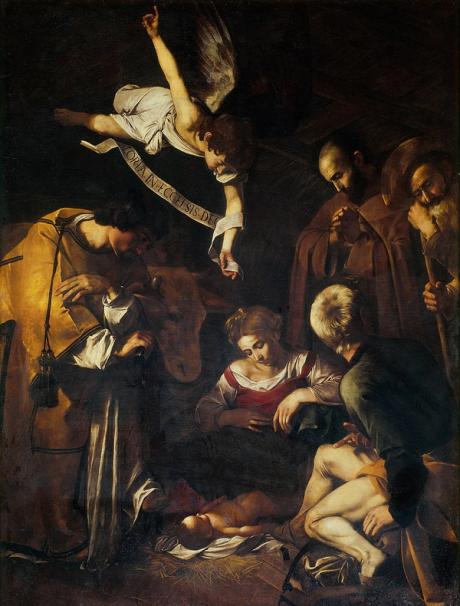Canoas
2010 - Film & Video (Film & Video)
13:30 minutes
Tamar Guimarães
Canoas by Tamar Guimarães is a film made for the 2010 São Paulo biennial as an exercise in the projection of national identity. The main subject and setting of the film is Casa das Canoas, the home that architect Oscar Niemeyer built for himself in the early 1950s. Overlooking the bay on the outskirts of Rio de Janeiro, the building has achieved iconic status in Brazil. Although a private residence, it served as an important site for cultural gatherings of Brazil’s elite and international guests. Canoas restages a glamorous cocktail party with actors and non-actors at the residence in which dancing and drinking punctuate conversations about modernity, social housing, political dictatorship, and artistic exile. Framing the festivities is the movement and interaction of servants as they prepare for the party and then leave for their own homes in the morning. And it is in these small transitional moments that Guimarães’s work is most critical. The film speaks directly to the contradictions inherent in the famed architect’s creation and the failed promise of modernity as expressed by the disparity between the labor and leisure classes. Intended as a space that was for the people and a better future, the conditions and context that produced Niemeyer’s building also further entrenched the social and class divisions in Brazil.
Tamar Guimarães explores the history of modernism, colonialism, and shamanism in Latin America through a manifold practice of film, video, sound, sculpture, and installation work. Using ethno-fiction and collectivist models, often working with non-actors and employing discursive forms of research, her films call into question political histories as they concern the real and the present.
Colors:
Related works sharing similar palette
» see more

© » KADIST
Subas Tamang
2020Study of History VI by Subas Tamang is an etching and aquatint print based on photographs taken by German photographer Volkmar Wentzel in 1949...

© » THEARTNEWSPER
Richly detailed crime podcast captures with verve the ‘grubby underbelly’ of the art and antiquities trade Art market Museums & heritage Exhibitions Books Podcasts Columns Technology Adventures with Van Gogh Search Search Podcasts review Richly detailed crime podcast captures with verve the ‘grubby underbelly’ of the art and antiquities trade The Professor: Hunting for the Mafia's Missing Masterpiece follows English antiquities and ancient coins dealer William Veres as he attempts to solve the theft of a work by Caravaggio Ben Lewis 13 December 2023 Share Caravaggio, Nativity with St...

© » KQED
The Best Late-Night Crab and Garlic Noodles in San Bruno | KQED Skip to Nav Skip to Main Skip to Footer upper waypoint The Midnight Diners Some of the Bay Area’s Best Garlic Butter Crab Is Served in San Bruno After Midnight Luke Tsai Thien Pham Feb 8 Save Article Save Article Failed to save article Please try again Email The Dungeness crab and garlic noodles at San Bruno’s A-One Kitchen hold their own against any restaurant in the Bay — and they’re available until 1 a.m...
Related artist(s) to: Tamar Guimarães » Better Homes, » David Velasco, » Francisco Candido Xavier, » Joachim Koester, » Köken Ergun, » Latin America, » Renata Lucas, » Sammy Baloji, » Steve McQueen, » Tim Griffin
» see more

© » KADIST
Sammy Baloji
Part-skyscraper, part-pyramid, part-citadel, this unfinished and ragged twelve-story building stands, incongruously, among the industrial environment of Limete...

© » KADIST
Köken Ergun
2012The Battle of Karbala was a military engagement that took place on 10 Muharram, 61 AH (October 10 th , 680) in Karbala, situated in present day Iraq, when Hussein, the grandson of the prophet Muhammad, was killed...

© » KADIST
Joachim Koester
2007Tarantism is the name of disease which appeared in southern Italy, resulting from the bite of a spider called Tarantula...

© » KADIST
Renata Lucas
2016Lucas’s quadroquadro (círculo) employs familiar materials for the artist: wood, paper, and glass...
Related works found in the same semantic group
» see more

© » KADIST
6pm – Les Statues Meurent Aussi (1953) 7pm – It for Others (2013) The second in a monthly series of double features exploring the relationship between cinema and contemporary video and performance art, Kadist screens Chris Marker and Alain Resnais’ 1953 film, Les Statues Meurent Aussi (Statues Also Die) (1953) and Duncan Campbell’s Turner Prize -winning film It for Others (2013)...

© » KADIST
João Maria Gusmão and Pedro Paiva
2015The artist duo João Maria Gusmão and Pedro Paiva traveled to Japan for a month to make a series of short 16mm films, often shot in slow-motion...

© » KADIST
Ana Vaz
2022Ana Vaz describes her film É Noite na América (It is Night in America) as an eco-terror tale, freely inspired by A cosmopolitics of animals by Brazilian philosopher Juliana Fausto; in which she investigates the political life of non-human beings and questions the modern idea of the exceptionality of the human species...

© » KADIST
Cauleen Smith
2018Set to the iconic and spiritual music of Alice Coltrane’s Turiyasangitananda (1937–2007), Cauleen Smith’s film Sojourner travels across the US to visit a series of sites important to an alternative and creative narrative of black history...

